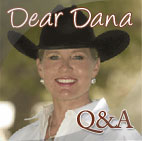Up to the Challenge
CRHA reiners wrap up 2018 at L.A. Equestrian Center
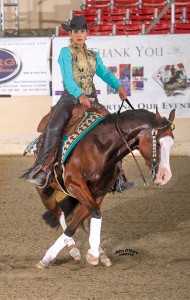
With three non-pro titles, Kristin Booth and Babys Got Blue Eyes were stars at the CRHA Challenge. (John O’Hara photo)
Southern California’s biggest reining competition drew top horses and riders from throughout California, Arizona, and Nevada. Coming away with special awards this year were Charmain Sauro, who rode Zins Rowdy Whiz to the CRHA Reiner of the Year Award; Rex Ross, recipient of the Rick Flathers Sportsmanship Award; Marilyn Scheffers, who rode Gunna Juice You to the Gatolotto Memorial Buckle; and Allison Williams who took home a trailer as well as the Rebecca Goss Memorial Trophy after the duo swept the CRHA and NRHA Rookie Level 2 events.
Setting this show apart from CRHA’s other shows is the number of aged events available to competitors.
Friday night saw tough competition in the Yellowstone Non Pro Derby. Kristen Booth swept the Level 4, 3, and 2 Non Pro Derby with a massive score of 149.5 aboard Kristin L Kutchuk’s Baby’s Got Blue Eyes. Brook Boyle, aboard Barbi and Michael Boyle’s Sunset Nite claimed second in the Level 4 and 3, only one point behind Booth. The Level 1 Non Pro Derby also saw big scores with Maria Danieli-Krueger taking the with with a score of 147 aboard Equestrian Properties’ Shining On Spooks.
Top-seller gelding brings record-setting $100,000 at Twombly Performance Horse Sale at NFR
The top five averaged $50,900, and the top 15 average was $34,500.
When the hammer fell on Lot 4, “Pumkin”, became Twombly’s all-time, high-selling horse! The beautiful 4-year-old Palomino gelding is an own son of HF Mobster. He has had reining training and went to a repeat buyer in Arizona, show officials said.
Lot 15, “Doodle”, who found a new home with repeat buyers from Kansas, sold for $42,500. The son of Mister Dual Pep is a finished reiner with earnings and is a gem to ride on the ranch.
UC Davis School of Veterinary Medicine receives $50,000 grant from ASPCA
NEW YORK—The American Society for the Prevention of Cruelty to Animals announced that it has granted $125,000 to three organizations to support their efforts to create one-of-a-kind, innovative programs that keep owned horses out of risk and in their homes.
The ASPCA Equine Welfare Safety Net Innovation Grant Program inspires new thinking and initiatives to improve equine welfare and expand safety net services for equines. The grant program supports new initiatives designed to identify owners with at-risk horses to deliver services and resources to help keep horses in their homes or provide access to euthanasia to alleviate suffering.
5-panel Testing
 As breeding season is right around the corner for those of us in the northern hemisphere, I think it is good to take into consideration genetic testing. The 5 panel test is a group of five diseases commonly found in quarter horses and related breeds. Knowing if your mare or stallion carries the genetic defects that can cause these diseases can help steer you to a breeding match that will prevent experiencing these debilitating diseases in the offspring.
As breeding season is right around the corner for those of us in the northern hemisphere, I think it is good to take into consideration genetic testing. The 5 panel test is a group of five diseases commonly found in quarter horses and related breeds. Knowing if your mare or stallion carries the genetic defects that can cause these diseases can help steer you to a breeding match that will prevent experiencing these debilitating diseases in the offspring.
HYPP
HYPP (Hyperkalemic Periodic Paralysis) is a disease that results in uncontrolled muscle spasms and/or paralysis. They can be as severe as to cause death. The defect results in too much potassium being leaked into the blood stream. It can be managed by a low potassium diet and also the use of potassium wasting diuretics. If a horse has 2 copies of the gene, they are most likely to manifest signs. If one copy of the gene, less likely.
GGT-Footing sets the standard for Western discipline arenas, too
 Chelsey Berkstresser has joined the team at GGT-Footing, and her enthusiastic attitude and knowledge of western riding disciplines will help spread the benefits of the GGT’s great products into the western pleasure and western markets. Growing up in the horse industry with a grandfather who bred Quarter Horses and Appaloosas, Chelsea is no newcomer to the equine industry. She showed Western Pleasure as a young girl before turning to working cow horse. In 2009, she represented the state of Pennsylvania and the PRCA as Miss Rodeo Pennsylvania. She currently competes in working cow horse events and is a show producer for the RSTPA.
Chelsey Berkstresser has joined the team at GGT-Footing, and her enthusiastic attitude and knowledge of western riding disciplines will help spread the benefits of the GGT’s great products into the western pleasure and western markets. Growing up in the horse industry with a grandfather who bred Quarter Horses and Appaloosas, Chelsea is no newcomer to the equine industry. She showed Western Pleasure as a young girl before turning to working cow horse. In 2009, she represented the state of Pennsylvania and the PRCA as Miss Rodeo Pennsylvania. She currently competes in working cow horse events and is a show producer for the RSTPA.
Meanwhile, GGT-Footing anticipates its groomers will revolutionize the ease and effectiveness of keeping arena footings in their best condition. They were developed especially for the care and levelling of uneven surfaces and geotextile soils as well as for sandy underground. Their construction is robust, and the handling is easy. Because of their compact and modular design, the device requires little space and offers one of the best price/performance ratios on the market.
Lope Departure
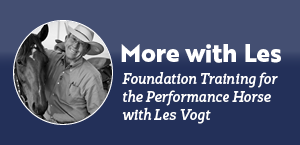 Setting the horse up correctly for crisp, clean lope departures is a critical component for any reining pattern and a necessary prerequisite for lead changes. You should be able to get your horse in position, that is, be able to push his hip toward his eye, so that you will be able to ask him to lope off on the correct lead, although you might be getting a few trotting steps in the meantime.
Setting the horse up correctly for crisp, clean lope departures is a critical component for any reining pattern and a necessary prerequisite for lead changes. You should be able to get your horse in position, that is, be able to push his hip toward his eye, so that you will be able to ask him to lope off on the correct lead, although you might be getting a few trotting steps in the meantime.
At some point, you’re going to want to put him in position with your hands, cue him with your leg and NOT let him go anywhere until you feel him reach up and commit to the lope with his hind leg. Once he does, turn him loose and let him go. It’s something you work up to slowly, but there will be a point where it’s time to raise the bar and insist that he lope off from a walk, and eventually from a standstill. All it takes is patience and practice.
Leaning forward
A common habit that riders develop is leaning forward while riding. It evolves over time, beginning by leaning forward with the shoulders and pushing with the seat in order to urge the horse to move. The rider is compensating for the lack of leg pressure. When adopting this posture, a rider pulls their seat out of the saddle while their legs swing behind their hips, flanking the horse and forcing the toes to point down. In order to stay in the saddle, the rider grips with their knees and balances on the horse’s mouth, creating a brace throughout their upper body.


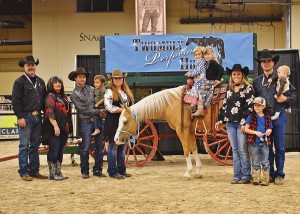
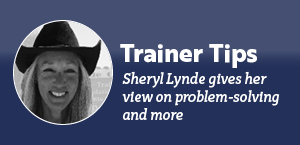
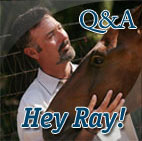
 Read Columns
Read Columns
